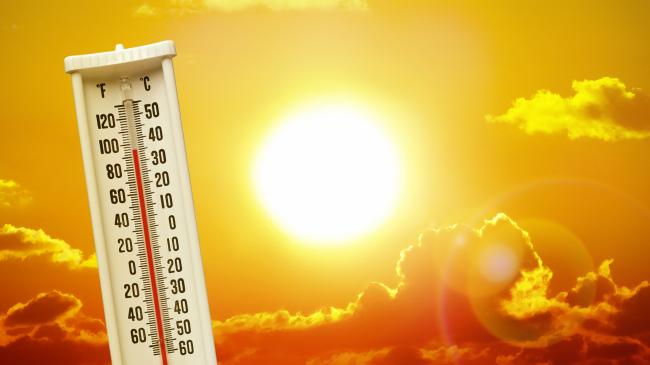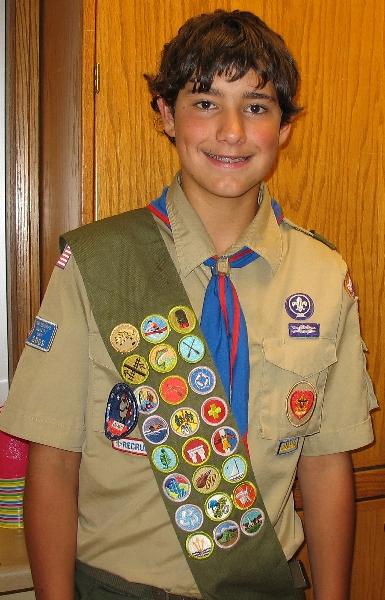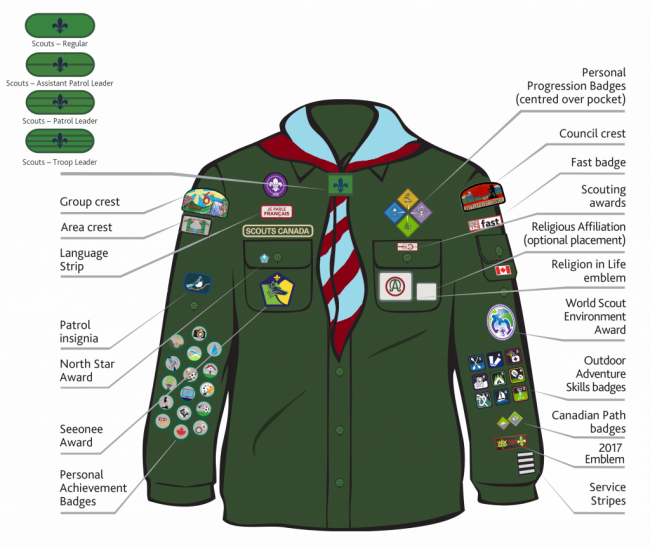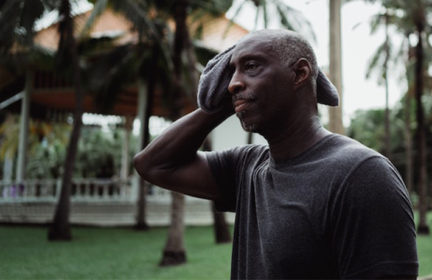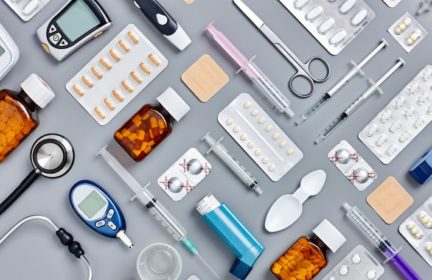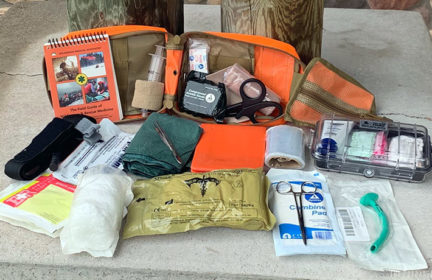How to prevent and treat heat exhaustion
Yesterday I attended an outdoor graduation ceremony and was outside in 80+ (27C)degree weather for 2-3 hours. I sunblocked up, wore long jeans, a cotton t shirt, and a baseball cap. I had brought plenty of snacks and drank so much water during those few hours and it wasn’t until I went to the bathroom and got out of the direct sunlight that I realized how hot I was. I hung out in the shade for about 30 minutes to cool down before heading back out there.
Now I am more prone to heat exhaustion because of my spinal cord injury. I guess when ½ of your body isn’t functioning properly, it can’t regulate temperature as well as an able bodied person. If you are younger than 4, older than 65, obese, or are on certain medications you can be more prone to heat exhaustion as well.
I felt fine all day and came home and felt fine when I went to bed. It’s during the night that the heat exhaustion finally kicked in. I wore a hoodie, slept under the sheets and comforter, and was still freezing cold. I woke up around 4:30am and felt like I had a fever of 105! My entire body was so hot, I could have cooked an egg on my leg. I stripped down to just a sheet and after a while was able to get to bed again once my body wasn’t cooking itself.
This morning I feel achy, cold, shivering, dizzy, fatigued, and have a headache.
Here’s what I’m going to be doing today to try and feel better:
- Took some ibuprofen to lower my fever and help with the aches
- Drinking a ton of water
- Drinking coconut water (not as processed as Gatorade, natural sugars, tons of electrolytes)
- Apples are so delicious with how juicy they are and the sugars inside
- Taking some magnesium supplements to replenish those electrolytes.
- Wearing cool and loose clothes. Although I am shivering pretty badly so I am wearing a hoodie again.
Here’s what I am going to do next time to be more prepared and prevent this from happening:
- Wear white or lighter colored clothing
- Bring a small umbrella for shade
- Wear a better hat with 360 degree protection instead of just protecting the front like a baseball hat does
- Bring a bandanna and wet it and apply that to my skin to promote evaporation
- Wear shorts and some sandals
In Argentina they have a tradition of taking a siesta during the hottest part of the day. All businesses shut down from like 12:00-2:00 or 3:00pm and everyone goes home and they take a nap, watch TV, and just conserve their energy. They then go back to work and reopen for a couple more hours. They have things down and understand to take it easy during the hottest parts of the day.
Be careful out there with the temperatures increasing as summer comes.
Did I miss anything? What do you do to stay cool during the summer?
-
Comments (28)
-
RedneckContributor - May 21, 2021
The hot, humid Mississippi summers can be tough on old, fat men like me. During that season, I try to do as much work as possible before noon. The heat of the afternoon is dangerous. I can’t always do this, so when out in the heat of the day, I always wear a proper hat, take breaks when I start feeling a little off (even if still out but in some shade) & drink plenty of water. It is key to have a hat that covers your whole head, with wide brims & hopefully neck protection. Last few years I’ve been wearing the following hat that I get at Amazon. It is lightweight, has mesh ventilation, wide brims & great neck protection. I HIGHLY recommend it! It is amazing how much cooler you will be if you keep the sun off your neck.
Killer for me is when I spend hours on the tractor cutting tall grass in the pastures. This can take many hours & when the grass is very tall, the tractor has to go slow. Thus it generates no breeze plus the engine is right in front of me… and it puts out a lot of heat itself.
-
Gideon ParkerStaff - May 21, 2021
That hat does look very cooling!
Something you just made me think about is putting a bandanna under my hat with some fabric hanging out the back to make an improvised neck guard.
Your’s is still better though because it does provide full 360 degree coverage, but in a pinch I could improvise something. I like that aspect of prepping, improvising and being creative.
-
RedneckContributor - May 21, 2021
Before I got this hat, I did as you mention. I would use a cloth rag stuffed under my hat to cover my neck. But this hat is much better because it includes every component I find essential in a shade hat.
-
-
Bob - May 21, 2021
Good evening Gideon,
Hope you’re recouperating.
My rambling from eastern Virginia where our summers approximate that of Chad, Africa.
Review snacks selection. Some foods do not create extra work for the bod to process.
I’m well over 65 and in summers here, once humid and hot, end of errands and all else.
Yes; wear light colored clothing. I know linen and other fabrics cool better than cotton. Recommend against shorts. Keep the skin covered. Can’t comment on sandals versus shoes but, still, wool socks might be most appropriate.
There are now bandanas – and some hats (and neck shades)like Rednect displayed nearby here – made of a material that absorbs much water. Load them with cold water and they last a long time before needing to reload with cool water.
This same type of material is also used in a boonie ranger hat … also has neck shade section…. It’s the OccuNomis brand “wicking and cooling Ranger Hat. I’m sure there are other brands out there also. I was getting these cooling bandanas as hand-outs at the health fairs I worked at. These bandanas do cool well.
Consider a LARGE umbrella for the extra shade.
Check on the sunscreen. Some reports say that the stuff interfers with sweating process.
Again, hope you’re feeling better.
-
Gideon ParkerStaff - May 21, 2021
That is a good point on checking for sweat blocking properties in the sunscreen. Thinking about it again, it was so hot and I was dying but I wasn’t sweating. Could have been an issue caused by my sunscreen.
-
Scott P - May 26, 2021
Also remember if you STOP sweating in a hot environment it is time to seek some medical assistance.
-
-
Scott P - May 26, 2021
There are a few parts to this that are going on, heat injury, dehydration, and possibly some sunburns. For the heat injury part cooling off, including active cooling (especially if there is altered mental status) is key. Get out of the sun, into a cool spot, and use water to help the cooling process. For example wetting clothing with water, or if in a wilderness situation getting into a stream or a lake (if safe to do so and with help if available) will drop temp fast. Remember this is for environmental heat injury and not fever (especially in pediatrics).
Prevention can go a long way. The umbrella and hat a great ideas. A canopy or sun shelter is also good depending on situation. I do a lot of climbing on sun exposed slabs that are long and one of the keys to not getting as hot or sunburned is actually a long sleeve sun shirt. They have UV protective ratings, and are light colored. They also are more of a tech wick type material so help with cooling through facilitating evaporation. I love the hooded ones, but there are also button up ones that are actually a bit lighter and have nice venting in the back. This is a massive improvement over any sort of sunblock goop.
For the dehydration part it is always better to go into a hot day in the field with a good hydration status, however most of us know beer is sometimes too tasty. So constant hydration throughout the day is key. Trying to catch up after getting dehydrated, even a bit, is hard since you might be trying to stuff more water in than the transport rate through the gut. The transport rate is actually affected by the presence of sugars, so things with small amounts of sugars are useful, however Gatorade and the like are too heavy in sugars. Look for things made for endurance athletes instead. In situations where you feel you are really starting to get dehydrated, urinary output is diminishing, and the such consider switching to a WHO rehydration salt mix. All of my wilderness med kits have some WHO rehydration packets because dehydration can come up fast out in the field.
-
Gideon ParkerStaff - June 18, 2021
When you mentioned dipping into a stream or lake, I have done that on camps or hikes before and it really does drop your temperature immediately. Remember to not get your boots and socks wet because that will lead to blisters and don’t walk immediately after because you will chafe.
-
Scott P - June 19, 2021
Yes, that is good if you have time, but if they have altered mental status or in other ways are in extremis I wouldn’t not bother wasting time on taking boots off before. You will probably be spending some time resting in the shade after, so you can let boots dry out.
Also another reason I almost never use boots outside of winter and stick mostly to approach shoes. I can get them wet and they dry out fast enough that I can just keep moving. Obviously need boots if you have to wear crampons or other traction, but then you are unlikely to have severe heat injury.
-
Gideon ParkerStaff - June 19, 2021
I see why some people like boots for hiking because of the great protection against rocks and good ankle support, but they are way too hot and heavy for me. I prefer a good hiking shoe or just tennis shoes for summer adventures.
Have you ever used crampons during the winter? Do they help out a lot?
-
Bob - June 19, 2021
https://en.wikipedia.org/wiki/Jungle_boot
Good morning Gideon,
There is a lightweight, summer type boot that’s the opposite of the winter type of warm boots. Above link tells of the “jungle boot”.
They do work when compared to the traditional heavy type of boots.
At least for research it’s worth reading this wiki link.
The jungle boots’ “drain outlets” do work if not covered over with polish or saddle soap.
-
Scott P - June 21, 2021
I do a lot of technical ice and mountaineering type objectives. So in those cases crampons aren’t a nice to have but are essential. Most of the winter hiking I do I use an aggressive pair of snowshoes like the MSR evo ascent, or micro spikes. If I am doing some gully climbing the crampons end up being used incase I run into some ice bulges.
trekking pole -> microspikes or snowshoes
ice axe or ice tools -> crampons
is kind of how I generally operate.
-
-
UbiqueContributor - May 26, 2021
Hi Gideon,
I am sorry to hear you got heat exhaustion. I hope you get checked out to ensure that you are okay.
Your post is very informative and will help people understand the seriousness of coping in the heat.
There are cooling vests, skull caps and wrist bands used for persons living with certain medical conditions and also who work in the construction industry.
Healthline has an article that lists some of the vests and other gear available by price range. They also cover the criteria to consider when choosing a cooling vest.
https://www.healthline.com/health/multiple-sclerosis/best-cooling-vests#choosing-a-vest
I am on a direuretic for high blood pressure which is not Potassium sparing. The increased urination to reduce my blood pressure also depletes my Potassium levels. *Note to anyone with high blood pressure who reads this – please verify with your pharmacist if the medication you take is not Potassium sparing. No one told me until I found out the hard way when I landed in hospital the first time.
When it is hot, I have to balance hydration with the heat stress of increased blood pressure. Before I used to drink water only and ended up in hospital. Now I drink an electrolyte solution, include Potassium rich foods in my diet and monitor closely for hypo-Potassium symptoms during times of increased urination. Potassium supplements can be deadly and most physicians will rarely Rx them so they are not an option.
Other ways I keep cool is by using the hot/cold paks as cool paks in the summer. I also have a supply of towels that can be soaked in cold water, wrung and then rolled up to place around the back of the neck.
Air conditioning is on my wish list and I hope I can get it installed this year. In the meantime, my basement is cool and I hang out there in my pantry on hot days 🙂
I hope you continue to feel better and thank you for the article Gideon.
-
Gideon ParkerStaff - May 26, 2021
Thank you for the well wishes Ubique. I had one crummy day but after rest and fluids and felt back to normal the next.
When having to drive through the desert in my old car in college that had a broken AC unit, I would take ice packs and put them in between my legs or on my lower back to just survive the trip.
-
UbiqueContributor - May 26, 2021
Glad to hear you are recovered, Gideon.
That ride through the desert with a broken AC is scary. Using ice packs to cool key areas of blood flow is a good idea.
Seeing as how they make all this cooling gear like vests, etc, I wonder if anyone actually makes a cooling chair? It would go a long way to keeping anyone using a chair cooler.
I like the idea of shutting things down during the hottest part of the day like they do in Argentina and other countries. It makes so much more sense to work with the climate.
-
Gideon ParkerStaff - May 26, 2021
The groin and arm pits have some of the largest veins running through them, so if you are able to cool off those areas it cools down the rest of the body pretty quickly. Gotta love the boy scouts for teaching me this.
Are there scouting programs up in Canada?
-
UbiqueContributor - May 26, 2021
Yes, we do have the Boy Scouts of Canada. Scouts and Girl Guides are great orgnizations for children and youth.
I included the link so you could see if there are any differences in how they approach scouting in Canada.
-
Gideon ParkerStaff - May 26, 2021
Both organizations look to be pretty similar. One thing that was interesting however was the merit badge placement. In the Boy Scouts of America, scouts place badges on a sash.
Where as in Canada it looks like they might place them on their sleeve and call them challenge badges or personal achievement badges.
-
UbiqueContributor - May 26, 2021
So there are a few differences there. I like the idea of placing the badges on the sash. It looks very nice. Would that be you in the photo with all the badges?
-
Gideon ParkerStaff - May 26, 2021
I think I got more merit badges than that kid in the picture. Not to brag or anything… 😉
But nope, not me. Just some random picture I found on the internet, and now he is forever going to be on The Prepared as well.
-
Bob - May 27, 2021
Good morning Gideon,
Speaking of merit badges ……
The Boy Scouts has/had (are BSA closing down ?) a merit badge titled “Emergency Preparedness”. The EM pamphlet is better (IMO) than counterpart FEMA pubs.
-
-
underprepraccoon - June 25, 2021
Glad you’re feeling better, Gideon.
I think a lot of heat is getting used to it before being out in it. If you weren’t sweating, but were well hydrated, you may not have been acclimated.
Every year when summer comes around I get worried I’ll stay inside too much in the cool and won’t get used to the heat and will not perform when I have to be out. This year with the pandemic it was much easier to never go outside, so that could be a consideration next year. Just getting warmed up a few times a week until just before you feel too hot should work and then you’ll know its working when you get a little warm you start just sweating. I should double check best methods but that’s what I remember.
I think one of the most important things with heat is also staying fed. Chugging water is good but you sweat out a lot of important things and burn a lot of calories trying to cool off. You don’t feel hungry cuz of the heat for some reason so it’s really easy to work through an empty stomach and get yourself really over heated. I normally aim for a meal every 3 hours, regardless of how not hungry I feel, though there’s usually an acuity drop off that’s noticeable.
I saw the WHO rehydration salt mentioned, I made up my own version as well that’s similar that I’ve been using for years. Two tablespoons of sugar and a pinch of salt, plus a flavor pack like instant lemonade or raspberry or whatever you like per 1 liter. The flavor makes them much easier to drink. I usually make them at home, using pill bags from the drugstore, pour in the flavor, salt and then fill with sugar so it’s not over loaded. I also crushed up potassium pills into the bag a few times. Double bag cuz they leak and you can easily carry 8 mixes for 8 liters of custom blend electrolyte. You can also drink lemonade or Arnold Palmer if you like that, and a sugar packet and a few shakes from a salt shaker and you can make it in a restaurant glass if needed.
Ice water before you go out is great too. I used to use my insulated Camelbak bag but maintenance got the better of it. Nalgene bottles will melt the ice but stay cool for a while. Vacuum bottles are too small for enough usually, but an insulated water job site dispenser with a bunch of ice in the car keeps your water cool and in a pinch you can throw some on yourself.
For sitting around in the heat, the thing I always come back to is the dollar store Chinese style hand fan. It would probably be better to buy a nicer one cuz the one I got recently came apart mostly, but the simple ability to move a bunch of air around you makes a crazy difference. Mix it with a misting spray bottle if the humidity is low and your can bring yourself down to a comfortable temperature. The upgrade would be a Opolar rechargeable fan; set it up, aim it and stay cool. Mines been running for almost a week straight in a no air movement corner of the house in 95 plus F temps and I’ve managed well.
I also saw ice packs mentioned; I like to carry with my summer load instant ice packs. They last around 20 minutes, and as mentioned, in a crotch, armpit or even neck, has been just enough to get you down a few degrees.
As for clothes, I usually can’t afford technical fabrics but I’ve found short sleeve button ups to with nicely- you can unbutton a few buttons in the middle and get some more air flow. I did get some wrangler nylon shorts and those have seemed really pleasant to wear in the heat but I’ve only worn them once and will need to see if non cotton does better.
Shorts will very much help. I’ll never understand how city workers can be out in full protective garb or contractors wearing sweatshirts in 90 degree heat. Thinner materials breathe better but aren’t as durable. It would be cool to just do those summer drape outfits that they wear in the deserts, but that’s unlikely in the western world I think. Also summer boots have dried fairly fast in my experience, at least out here in the dry high desert.
I hope some of this info can help, considering it just became summer.
-
Gideon ParkerStaff - June 26, 2021
I really appreciate the advice and tips! From what you said, it sounds like the biggest thing I can do to improve my endurance in the heat is to just get out into it more often. If my body is used to air conditioned rooms all day and then I just decide to go out into 90-100 degree weather, I shouldn’t be shocked when my body is not too happy.
I have a little spritz bottle that I am going to fill up with water and use to mist myself as well.
-
RedneckContributor - June 28, 2021
Gideon, keep in mind misting won’t help if you have high humidity. Here in Mississippi, our humidity is normally so high, we don’t get the quick evaporation which cools you down. So when I sweat, I just stay soaking wet… and miserable.
And yes, spending more time out in the heat will allow your body to acclimate to some extent. I’m not convinced that your body actually changes or if your mind learns to not freak out. I find if I start work mid morning, before it gets too hot, then as the day goes on & gets warmer, my body acclimates. If I start early afternoon, in the heat of the day, There is no slow acclimation & I suffer.
Living & working on a 20 acre homestead in Mississippi means I spend much of the summer outdoors. My body/mind does seem to acclimate a bit but I think the biggest thing is that I learn to read the signals my body puts out. I learn when it is time to take a break before I go too far. I learn the feeling of being “low” and that tells me I need some sugar for a quick boost. I keep lots of Lipton bottled flavored tea in our mudroom refrigerator, so when I come inside for a cool down, I usually grab one or two that is not diet. That accomplishes two things. It rehydrates me & gives me an energy boost from the sugar. If you ignore the signs & push too far, then you are in a dangerous situation. At the point you stop sweating, stop immediately, get inside to cool down & drink plenty of fluids… preferably something sweet like juice. If that happens, stop for the day. You are done.
Also, while outside working, it is important to find the proper amount of time for your cool down breaks. I find around 20 minutes works well for me. Too short and I haven’t recovered enough. Too long and I get stiff and I lose the acclimation I have built up during the day. For reference, it is not unusual for me to spend at least 8 hours outside on weekends & Tuesdays (I stay home on Tuesdays).
-
underprepraccoon - June 28, 2021
I read back into it, and yes, just doing little bouts of activity in the heat is the general consensus of getting used to the heat. It was also suggested to just turn up the thermostat a couple of degrees over the week until you get closer to the outside temp.
But moving in the heat I think is pretty critical, in my experience it gets you used to the heat in a few days instead of sitting in it for a month.
I also agree with Redneck, paying attention to your body is important so you don’t get sick. The ice tea is a really good idea too.
I’m running into trying to stay used to it now with the heat taking a break, wearing extra clothes and keeping the fans off cuz 75F feels chilly
-
-
Bob - July 2, 2021
Good morning,
In the July 2021 FEMA Indiv and Community Newsletter (can’t link; my copy is to my group and thus not eligible) by now available on the web. Fast check can be at:
Ready/gov/heat (probably also at “beat the heat safely”)
Returnig to this poorly drafted submission here …… the lead tip:
“Do not use fans … … do not reduce body temperature”.
Had to contemplate this for more than a few minutes ! I’m still think about this tip.
“Sixty years ago I knew everything; now I know nothing; educative is a progressive discovery of our own ignorance.” Will Durant, American historian
-
Alicia - July 18, 2021
Wow, Gideon. That sounds both miserable and scary. I’m glad you recovered quickly and shared your experience for us to learn with you. I too am re-learning about getting into the heat as we have started bicycling and the summer has arrived! I know I’ve not ever acclimated well to the heat but have to sub zero temps so perhaps it is genetic. 🙂 Like others here, we only ride early in the day – finish by 10am and go covered from the sun with a helmet, long sleeved sun shirts, etc. In my BOB I’ve included a Columbia Booney hat as it can cinch down to my small head and its mesh does breath well (many miles in these as I have several). I want the air movement on my neck which I’ve found the cape like Redneck’s favorite to impede. I also included a Kool tie that is a longer lasting version of the wet bandana as it has absorbent beads in it that hold more water. It’s a dry heat here in SoCal and so the evaporation works. Given that heat is more likely the weather than cold or rain in SoCal, I’ve been sure to include a breathable sun-hat in the GHBs.
Columbia also offers a version with a stowable neck cape which may be the best of both worlds or do neither option well. I don’t know how well its mesh panel breathes as it’s different than the basic booney.
-
Gideon ParkerStaff - July 18, 2021
Thank you for taking the time to respond Alicia. Biking really is a fun hobby so I’m glad you are able to get out and enjoy it. Thank you for your recommendations, they are very helpful and give me some good things to consider and think about.
-
-
- News for the week of 2025-06-30 - 6 hours ago
- News for the week of 2025-06-23 - 1 week ago
- News for the week of 2025-06-16 - 1 week ago
- News for the week of 2025-06-09 - 3 weeks ago
- News for the week of 2025-06-2 - 3 weeks ago
This forum is heavily moderated to keep things valuable to as many people as possible. Full community policies are here. The basics:
- 1. Be nice to each other.
- 2. Stay focused on prepping.
- 3. Avoid politics, religion, and other arguments.
- 4. No unfounded conspiracies, fake news, etc.
- 5. Debate ideas, not people.
